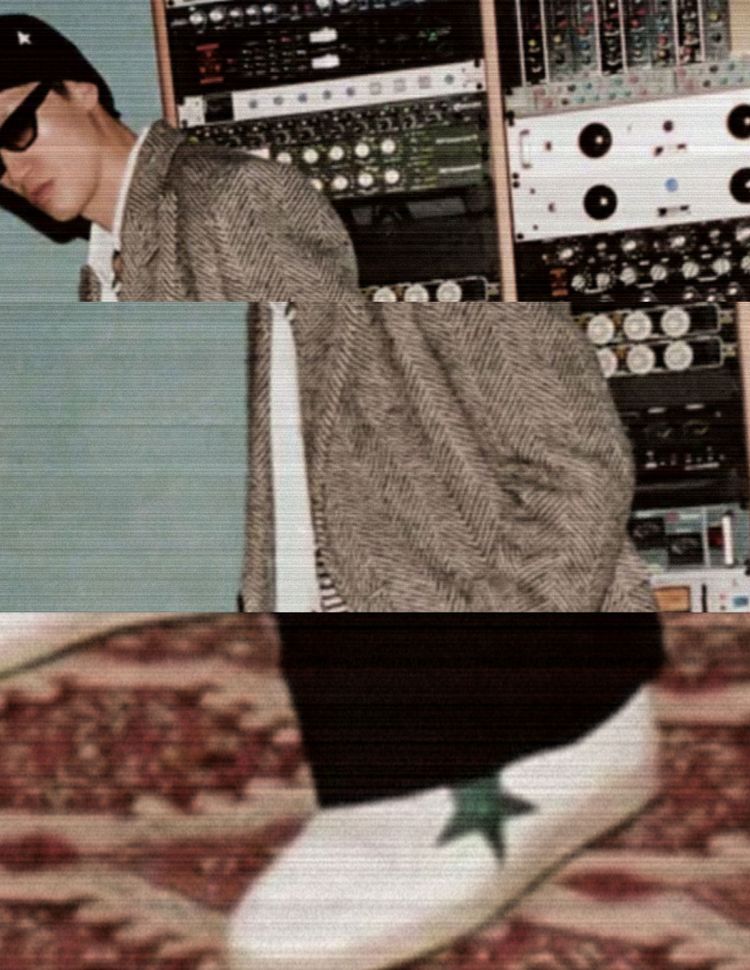Golden Goose, Artisanal Craftsmanship and Perfect Imperfection
How the Venetian brand set the template for luxury sneakers years before anyone else.

Luxury sneakers at the beginning of the 21st century looked a lot different than they do today. There was no Balenciaga Triple S. Givenchy’s innovative TK-360 was entirely outside the realm of possibility. Nike and Off-White’s groundbreaking 'The Ten' collection was still over 15 years away. Thus, it took considerable foresight as well as tenacity for anyone to dream up a sneaker brand focused strictly on luxury in the year 2000. Enter Golden Goose.
Best known for its intentionally distressed and worn sneakers, Golden Goose was founded by husband-and-wife duo Alessandro Gallo and Francesca Rinaldo in Venice, Italy at the dawn of the new millennium. Born out of the couple’s love for vintage clothing and the role memory plays throughout life, they set out to produce luxury sneakers from premium materials that are then purposefully distressed, by hand, to create their signature worn-in look.
Like many fledgling family businesses, Golden Goose first gained a following in its hometown, earning a reputation for the expert craftsmanship seen on each pair. Rips, scratches and marks made by local artisans defined the brand’s earliest designs, while “perfect imperfection” helped describe Golden Goose’s unorthodox approach to those unfamiliar with the brand. The founders were so committed to this idea, in fact, that different distress patterns could be found on the left and right shoe, resulting in a pair of shoes that looked—and were—utterly unique.
Gallo and Rinaldo continued to hone the brand’s distinctive point of view as Y2K aesthetics emerged in real time. Low-rise jeans picked up where oversized denim left off. Statement accessories replaced the understated handbags and sunglasses of the ’90s. Metallic accents and pops of neon outshined the faded colors of the grunge era. Golden Goose listened, experimented and reacted appropriately, debuting the Super-Star in 2007.
A low-top, tennis-style design featuring a distinctive lopped-star logo on the lateral side, the silhouette set the template for the brand’s future, giving new and returning customers a blank canvas on which to project their own ideas and creativity. Golden Goose developed countless iterations of the style, each radically different from the next. Vintage effects applied to the rubber sole stood side by side with shearling uppers and animal-print overlays. Gold-foil lettering on the lateral side denoting the brand and model appeared in varying degrees of legibility. Manual scuffing at the toe and heel mimicked the wear and tear of skate shoes.
The silhouette earned Golden Goose legions of new fans and, in 2015, the brand opened its first flagship store in Milan. As both Italy’s capital and one of the world’s premiere fashion destinations, the store immediately exposed the label to a much larger and more international clientele. Additionally, the store allowed Golden Goose to showcase a proximity to the prestigious houses that were now their neighbors—and to highlight major differences.
Tourists and residents would wander into the store after visiting a luxury brand a few doors down and be thrown off by the distressed sneakers lining the shelves. This simple geographical placement gave Golden Goose the opportunity to explain and showcase the unique philosophy behind the brand’s footwear: luxury but a different kind of luxury.
Around this time, Virgil Abloh, well on his way to becoming the era’s most influential designer, began expressing admiration for the brand, drumming up whispers of an impending collaboration. In early 2016, these rumors came to fruition, resulting in a collaborative sneaker available exclusively at French boutique colette. Reworking Golden Goose’s Starter silhouette with a black heel counter and “COLETTE EDT” on the outside heel, Abloh followed the debut collaboration with a second sneaker at Golden Goose’s NYC flagship. A third collaboration followed in Hong Kong that same year, completing a trilogy of Off-White-stamped releases and cementing Golden Goose as a style icon on the rise.
Building off the momentum created by back-to-back-to-back Off-White releases, Golden Goose set off on a steady path of collaborations with brands and designers around the world. In early 2017, for example, the brand debuted a collaboration with Italian-Egyptian artist Omar Hassan. The following year, Golden Goose teamed up with NYC-based arts collective New York Sunshine on an exclusive silhouette, the Stardan, as well as a collaborative installation inspired by basketball at the 2018 Venice Architecture Biennale. In 2021, Golden Goose finally solidified the bond between its skating-inspired sneakers and the real thing, collaborating with American pro skater Cory Juneau on an exclusive, one-of-a-kind pair to coincide with his appearance at that year’s Tokyo Olympics, where he would go on to win bronze.
At the same time, Golden Goose began expanding its product catalog, introducing a number of shoes that brought the brand’s signature techniques to new silhouettes reminiscent of familiar shapes: the Yeah, a pared-down version of Nike’s Air Force 1, with a stance suggestive of forward momentum; the Space-Star, a bulbous-soled version of the Converse One Star; the Dad-Star, an homage to the decade’s obsession with “Dad Sneakers;” and, as recently as 2022, the YATAY, an eco-conscious, animal-free silhouette produced from sustainable materials such as biodegradable rubber and vegetable leathers.
Today, the brand has—through standout collaborations, a growing roster of silhouettes and an unwavering commitment to quality—realized the vision set out by Alessandro and Francesca all those years ago. And while the label’s ubiquity might read like an overnight success story for those on the outside looking in, the timeline of Golden Goose reveals the label was operating on its own frequency all along. The major difference? Others have only just begun tuning in.